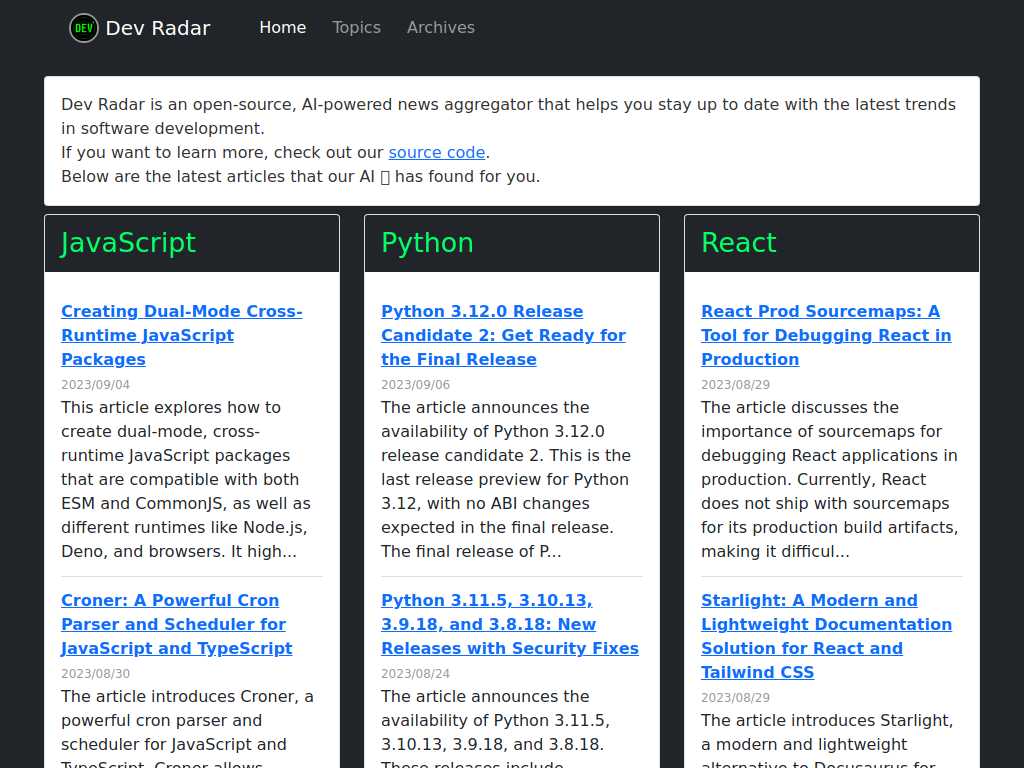Dev Radar
Natural Language Processing

Creating Dual-Mode Cross-Runtime JavaScript Packages
Average rated: 0.00/5 with 0 ratings
Favorited 0 times
Rate this tool
About Dev Radar
https://dev-radar.com/
Key Features
- Compatibility with ESM and CommonJS
- Support for Node.js, Deno, and browsers
- Single codebase for multiple runtimes
- Deno-to-Node-Tool (DNT) support
- Conventional build tools utilization
- Broad compatibility
- Reduced maintenance efforts
- Consistent API across environments
- Streamlined development process
- Seamless transition between environments
Tags
JavaScriptCross-runtimeESMCommonJSNode.jsDenoBrowsersDual-mode PackagesCompatibilityMaintenance
FAQs
What is a dual-mode JavaScript package?
A dual-mode JavaScript package is compatible with both ECMAScript Modules (ESM) and CommonJS, making it adaptable for various environments.
Why should I create a dual-mode package?
Creating a dual-mode package ensures broader compatibility, reduces maintenance, and facilitates a seamless transition between different environments and module systems.
What environments are supported by cross-runtime packages?
Cross-runtime packages support multiple environments, including Node.js, Deno, and browsers.
What are the benefits of cross-runtime packages?
Cross-runtime packages provide a consistent API across different environments, enhancing compatibility and ease of use.
What is the Deno-first approach in creating dual-mode packages?
The Deno-first approach involves setting up a basic Deno library and using the Deno-to-Node-Tool (DNT) to add the build script for Node.js compatibility.
What is the Node-first approach in creating dual-mode packages?
The Node-first approach uses conventional build tools to convert an existing NPM library to be compatible with Deno and other environments.
How do dual-mode packages reduce maintenance?
Dual-mode packages reduce maintenance by providing a single codebase that works across multiple environments, eliminating the need for environment-specific code.
What tools are used in the Deno-first approach?
The Deno-first approach uses the Deno-to-Node-Tool (DNT) to ensure compatibility with Node.js while developing primarily for Deno.
Is it possible to convert an existing package to dual-mode?
Yes, existing packages can be converted to dual-mode using either the Deno-first or Node-first approach, depending on the primary environment of development.
What is the main advantage of dual-mode packages for developers?
The main advantage is the ability to write code once and use it across multiple environments without modification, streamlining the development process and improving efficiency.